Tudor Recipes: For the Love of Oranges!
A persistent story connects Mary Queen of Scots with ‘marmelade’. In this apocryphal story, Mary Queen of Scots suffered from seasickness and her doctor concocted a sugary orange mixture to make her feel better and ‘marmelade’ was born. According to that story, the name marmalade came from ‘Marie est malade’ which translates from French into English as ‘Mary is ill’. While this tale is pretty interesting, sadly it is just a myth, another case of the way that a good story can triumph over historical veracity. As it happens, the true story is not only accurate but just as fascinating. And so, in today’s blog, we will be examining the history of oranges in Tudor recipes and featuring three of the best!

Marmelade first appeared as a word in the English language in 1480, borrowed from the French ‘marmalade’ which bears its origins from the Portuguese word ‘marmelada’ which referred to a quince paste from Portugal. The original marmalade was made from quince, not oranges, and was a paste so stiff, it was cut with a knife and served in slices as a dessert in its own right.
This imported luxury item was a much-prized treat and in 1524, the papers of King Henry VIII recorded a gift – a “box of marmalade” from Hull of Exeter. In the letters to Lord Lisle, there are a few entries recording such a treat – from William Grett, 12th May 1534 “I have sent to your lordship a box of marmalade, and another unto my good lady your wife” or from Richard Lee, 14th December 1536, “ he most heartily thanketh her Ladyship for her marmalade”.
It is also said, that marmalade was a favourite treat of Anne Boleyn and her ladies in waiting. The move from quince as the main ingredient to oranges appeared over time and by the seventeenth-century, the use of Seville oranges became common.

English recipes for jams and jellies that are marmalade-like date back to the 1500’s and were made from various fruits such as quince, plums, dates, cherries and apricots. It was only in the early seventeenth-century that oranges started to be the fruit of choice. The Scots are credited in the eighteenth-century with developing marmalade as a spread.
The bitter ‘Seville’ orange was brought to Spain and Northern Africa by the Arabs and Queen Eleanor of Castile bought seven oranges from a Spanish ship in Portsmouth in the thirteenth-century. Catherine de Medici gave her guests gifts of oranges. By the end of the sixteenth-century, Swiss visitors to Montpelier were amazed at the cheapness of oranges which people threw at each other during Mardi Gras! In April 1532, Lady Sidney specialized in fruit and sent orange pies to the king.
How the sweet orange arrived in Europe is not very clear. The first written reference dates back to 1472, in a bill of sale of 15,000 sweet oranges from a trader in Italy. In 1475, Platina states that sweet oranges are almost always suitable for the stomach as a first course. In 1483, Louis XI gave sweet oranges from Provence to St Francis as a gift, for the holy man who eats neither fish or meat”. The sixteenth-century Italian poet Andrea Navagero described splendid sweet orange trees in the kitchen garden of the king at Seville. In Italy, in 1550, the monk Leandro Alberti referred to the sweet orange trees he saw in Sicily.

The words ‘orange’ and ‘orenge’ were first recorded in the fifteenth-century, the colour orange was usually referred to as ‘yellow red’ or’ tawny’ until the sixteenth-century. On his second voyage to Haiti in 1493, Columbus took citrus seeds and it is likely that the Spanish took the bittersweet orange to Florida and South America.
In 1562, Lord Burleigh owned a rare, single orange tree. Sir Walter Raleigh planted orange seeds in Surrey, which began to bear regular crops until 1595 but were killed in 1739 by the cold.
Samuel Pepys recounted in his diary in 1665, how a maid of honour dressed as an orange wench to the amusement of all. He also commented on the ‘brave’ orange trees in Lord Wotton’s garden in 1667 as it became increasingly fashionable to grow orange trees for the well-to-do and special orangeries were commissioned by the wealthy to house their orange trees.
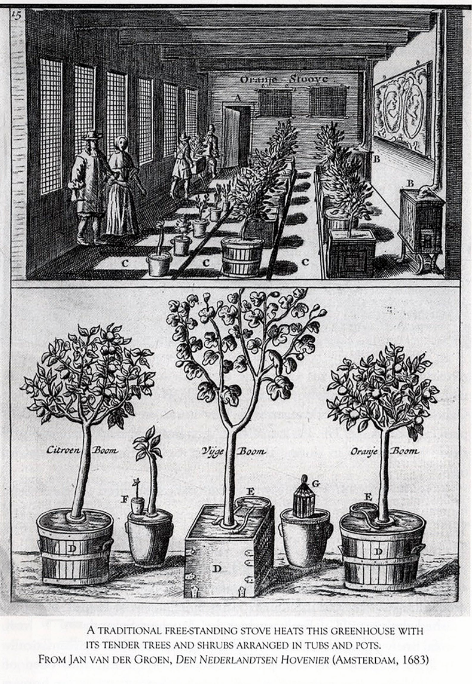
In Europe, Seville oranges are traditionally only available for a short time around February – so what better than to dedicate this month’s blog to this celebrated and much favoured Tudor fruit? So let’s dive into some succulent Tudor recipes where oranges take centre-stage!
Tudor Recipes: Marmelade of Lemons or Oranges
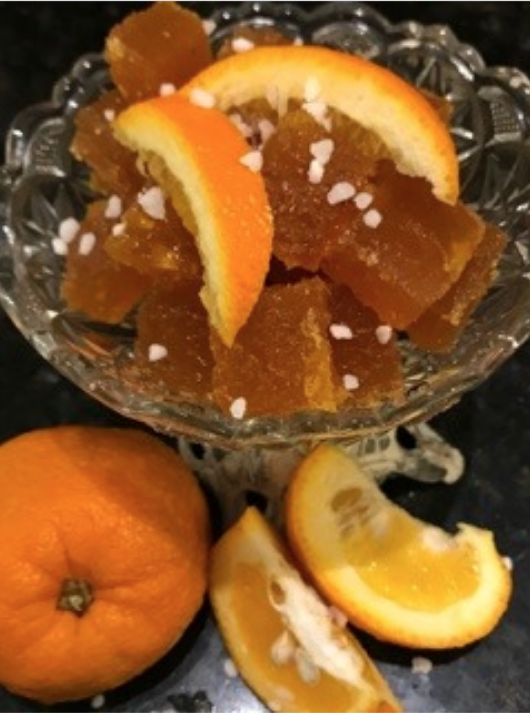
One of the many Tudor recipes from Peter Brear’s ‘Cooking & Dining in Tudor & Early Stuart England’ is this one for Marmelade on page 543.
Ingredients:
5 large oranges
3 apples (Cox’s orange pippins)
About 450g sugar
Method:
Cover the fruit with water, cover and simmer for about one hour until the peels are very tender when tried with a skewer, then remove from the heat, drain, and rub the fruit and peels through a sieve. Weigh the pulp, add its weight in of sugar and stir over a gentle heat until very stiff before pouring into an airtight container or jar, and sealing down. Alternatively, mould the thick marmalade as half inch slabs on greased glazed tiles, place in an oven at 110C/225F gas mark ¼ for 30 minutes, remove, allow to cool, then turn over, repeating this until it forms a firm, dry surfaced slab.
Sucade of lemon or orange peels
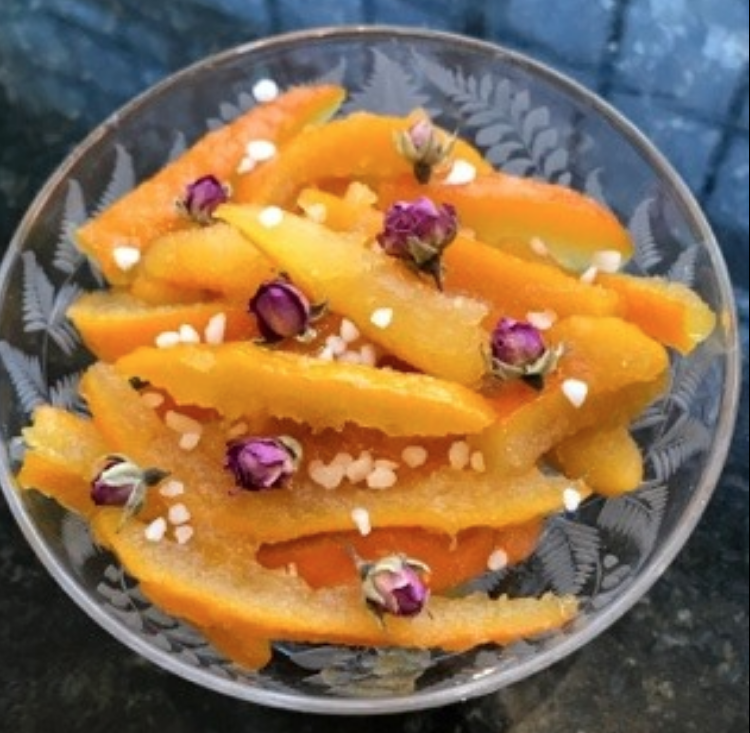
Updated Recipe – Ingredients:
3-5 Seville oranges
2-3 drops of rose water
About 500g sugar
Method:
Quarter the oranges, remove the segments from the peel, scrape the inner side of the peeling making sure no membranes are left. Simmer the peels until they are tender and change the water a few times to remove the bitterness. When soft, simmer peels with freshwater, sugar and rosewater until they become somewhat transparent and the syrup runs like honey. Put in a jar or pot and seal down.
Tudor Recipes: Chicken with Oranges
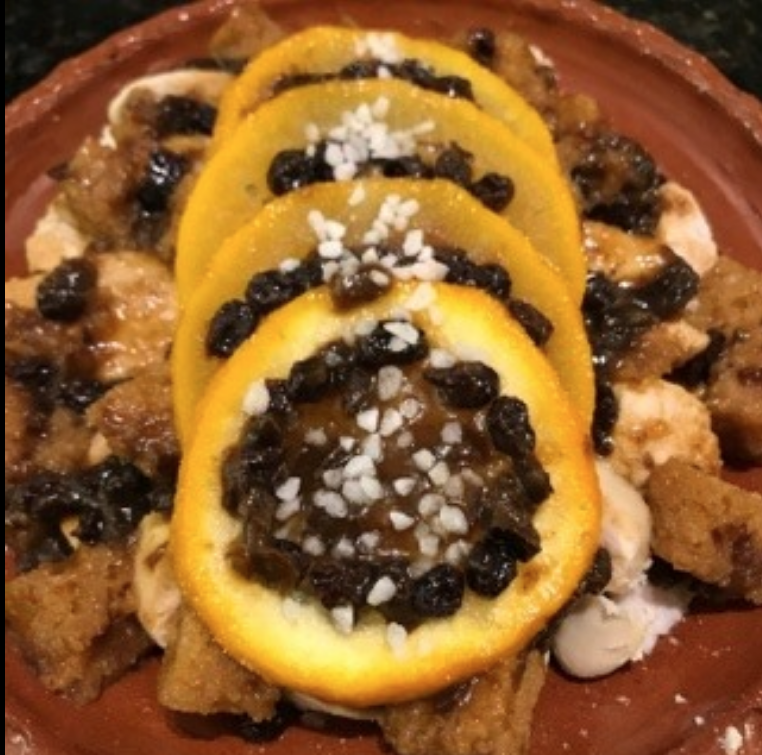
Another one of the wonderful Tudor recipes featured in Peter Brear’s “Cooking & Dining in Tudor & Early Stuart England” is this one for Chicken with Oranges (page 267).
Ingredients:
5 Seville oranges
1 stock cube
35g currants
35g prunes
50g bone marrow(or butter)
2 blades mace
450ml white wine
1-2 tbs verjuice or wine vinegar
½ loaf of white bread without the crusts and cubed into sops
1tbs sugar
1/8 tsp each ground cinnamon and ginger
Method:
Plain boil the chicken in stock, adding a whole orange 30 minutes before serving. Put the stock cube, currants, prunes, marrow, mace and juice of 3 oranges into the wine, cover, and simmer for 15 mins. Thinly slice the remaining orange into a little water in another pan and stew gently for 5-10 minutes until tender, changing the water if bitter.
When the chicken is ready, place on its dish, cover with the bread sops soaked in the wine, prunes and other ingredients, sprinkle with the sugar mixed with the ginger and cinnamon and top with the orange slices.
We hope you have enjoyed these Tudor recipes. For further reading and a list of sources used see below.
 Each month, our Tudor recipe is contributed by Brigitte Webster. Brigitte runs the ‘Tudor and 17th Century Experience‘. She turned her passion for early English history into a business and opened a living history guesthouse, where people step back in time and totally immerse themselves in Tudor history by sleeping in Tudor beds, eating and drinking authentic, Tudor recipes. She also provides her guests with Tudor entertainment. She loves re-creating Tudor food and gardens and researching Tudor furniture.
Each month, our Tudor recipe is contributed by Brigitte Webster. Brigitte runs the ‘Tudor and 17th Century Experience‘. She turned her passion for early English history into a business and opened a living history guesthouse, where people step back in time and totally immerse themselves in Tudor history by sleeping in Tudor beds, eating and drinking authentic, Tudor recipes. She also provides her guests with Tudor entertainment. She loves re-creating Tudor food and gardens and researching Tudor furniture.
Sources
- Cooking & Dining in Tudor England by Peter Brears
- The treasure of commodious conceits,… by John Partridge (1591)
- Delights for Ladies by Hugh Plat (circa. 1617)
- Oranges, a Global History by Clarissa Hyman
- World wide words
- Food in Early Modern England by Joan Thirsk

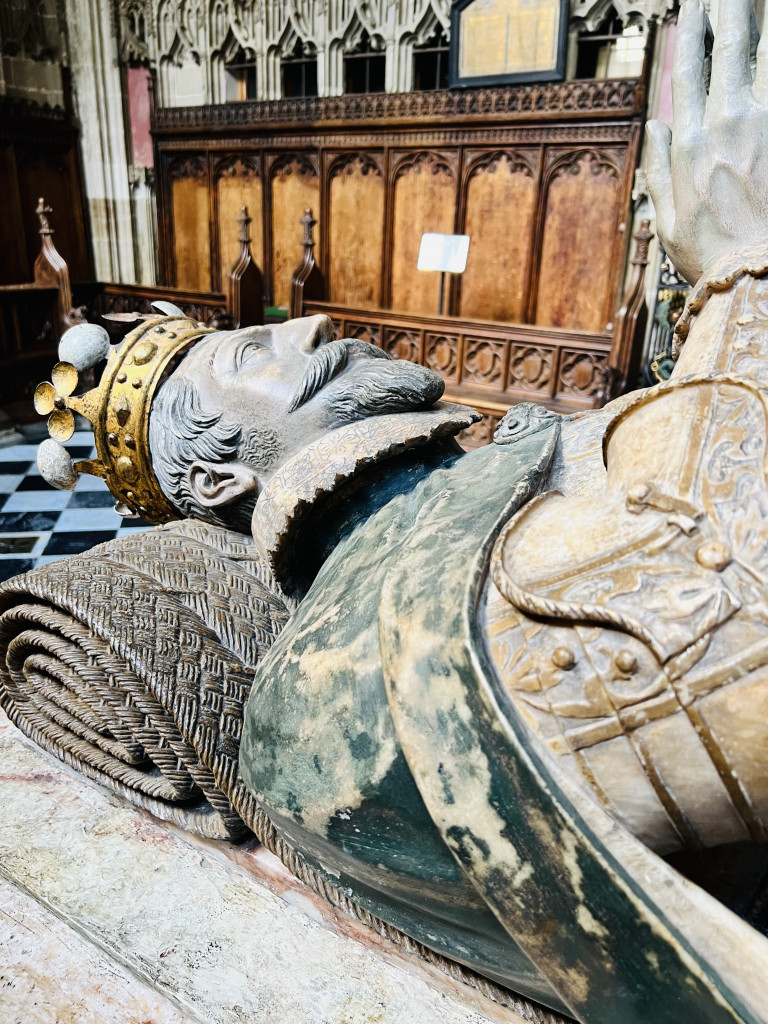

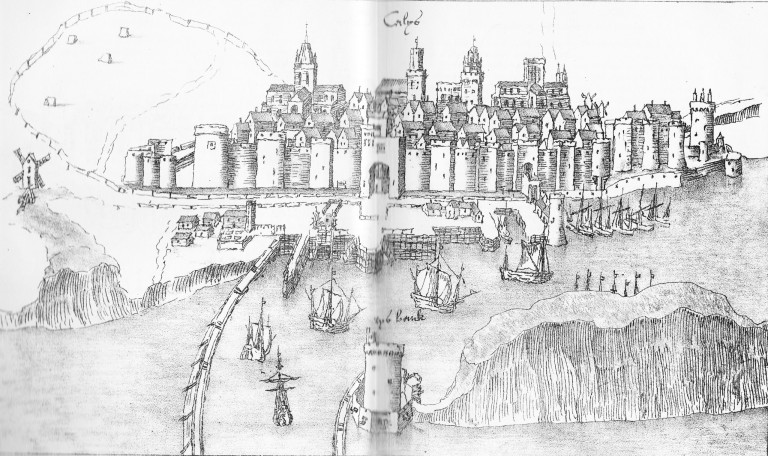
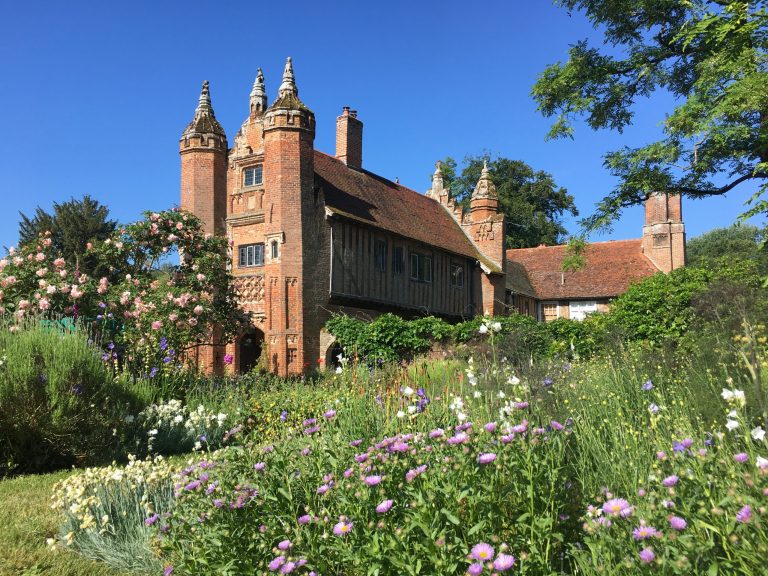
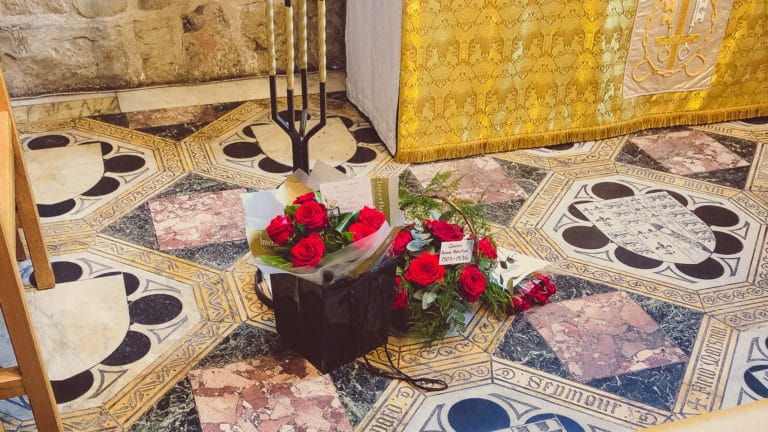
What a wonderful and sweet read!! Thanks fir the history a d the recipes!!